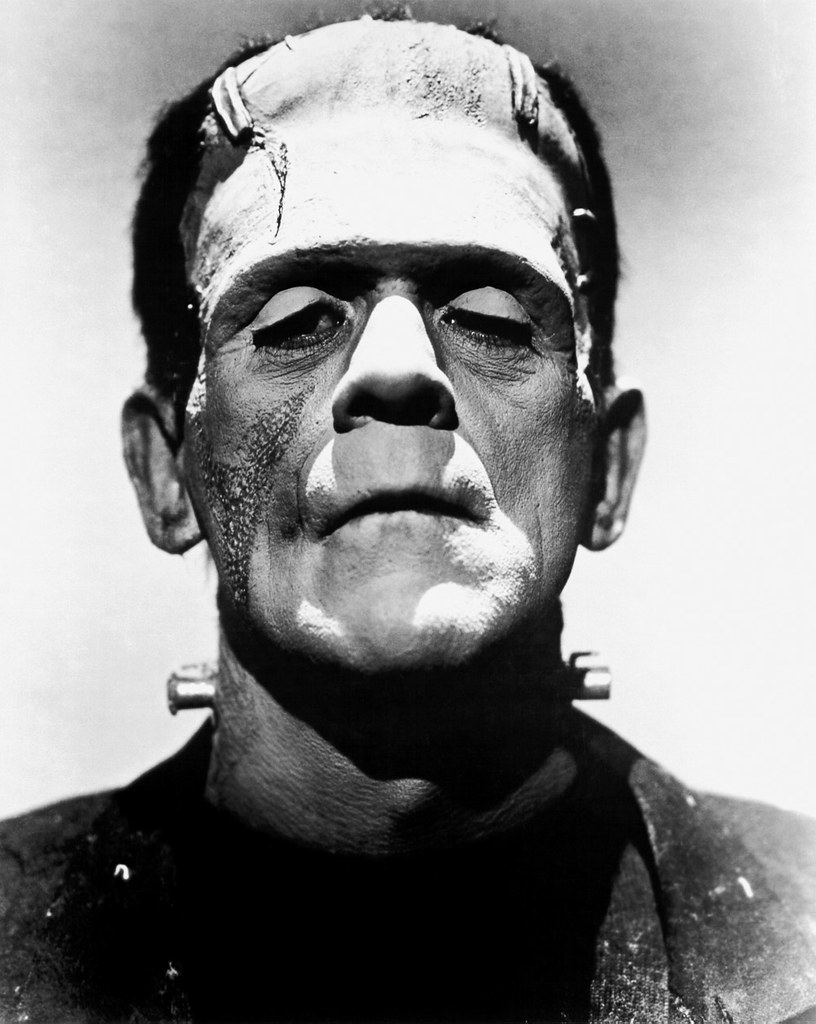The most famous monsters throughout history have consistently been depicted accurately according to their source material. Dracula has always been a pale bloodsucking menace who preys on damsels in distress. Pennywise has always been a cheesy clown who awaits prey inside of dimly lit sewers. Pumpkinhead has always been a vicious beast that works to attain the revenge of others. However, this consistency is not the case with one of fiction’s most prominent creatures, Frankenstein’s monster.
Beginning in early films like “Frankenstein” and “The Curse of Frankenstein,” the monster has regularly been depicted in ways that contradict his source material, that being the 1817 novel by Mary Shelley. Her writing is richer than the stereotypical afraid-of-fire monster that pop media has exposed viewers to.
The 1931 “Frankenstein” film’s much more popular interpretation of the monster does not do justice to the nuanced character that Shelley expertly cultivated in her novel.
The film takes the creation of the monster to a fantastical degree. Dr. Victor Frankenstein set up an elaborate and remote laboratory dedicated solely to building the monster. Alongside him was a hunchback henchman Igor, who was so one-dimensional that his only trait is serving Frankenstein. He and Frankenstein hoisted the monster’s body into the air during a terrible storm where it was struck by lightning and subsequently brought to life. This form of creation popularized the depiction of metal bolts protruding from the monster to attract lightning.
Meanwhile, the novel follows a contradicting version of this story. Frankenstein was only a college student when he began his work to create the monster, which he did alone. Rather than working in some elaborate laboratory, he utilized his dorm room at college. Nevertheless, he was devoted to his work and neglected every other aspect of his life to focus on creating the monster. Frankenstein’s remoteness is displayed by his isolation from others rather than his geographic location. His creation was not born from a flash of thunder, but a discreet chemical combination.
Moving into the monster’s nature, this is where the interpretations most diverge. In the film, the monster is depicted more as a force of nature than an actual character. He is beast-like and spent the runtime of the film tormenting the nearby village. He was not capable of thinking beyond attacking others because that is what the filmmakers chose as his nature. They constructed a rigid figure only capable of killing and wreaking havoc. There is no nuance to be found here and it does not show the monster as he was meant to be.
The novel depicts the monster as a multidimensional character deeply conscious of his condition. The monster was aware that regular people were disgusted by his visage, so he decided to live away from humanity. He found himself a secluded place to stay, but the longing to be accepted by another person lingered. So, he placed himself near a family’s home and observed them from afar. By doing this, he learned to communicate and grew to love the family, despite never having spoken with them. Deep down, all he wanted is to be loved.
Both stories also take differing approaches to the monster’s actions. In the film, the monster killed with no rhyme or reason – it did it because it was capable of doing so. There is no overarching goal because he was only a human-shaped beast that had been let loose. This version of the monster was only capable of interacting with the world through violence.
Inversely, the monster of the novel carries meaning in his actions. If he decided to take a life, it was only in the pursuit of finally being accepted by another person. Each life he took further propelled Frankenstein to create a being to match him, and become his companion in a world that despised him for existing. He sought to escape from that world by violence.
Finally, the aversion to fire was a fabrication of the film. The monster was terrified by the smallest sources of a spark in the film. Whenever a character wanted to scare the monster or get him to flee, all they had to do is pick up a torch. However, in the novel, the monster is not more afraid of fire than an average person. Of course, he does not want to be burned, but he is not going to flee at the sight of a little fire.
Contrary as it may seem, the 1931 film is still worth a watch for horror lovers. Nevertheless, the hope for an adaptation of the character that stays true to the source material is still alive. The prolific filmmaker Guillermo del Toro is currently working on a “Frankenstein” film and many hope he will do the monster justice.


